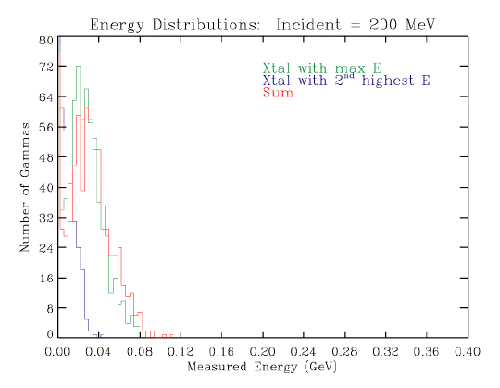Investigation of Energy Depositions By The Pair In Top of Calorimeter
(Attempt to Improve Low Energy Resolution)
J.P. Norris and H.M. Arrighi
Expanded from February 10, 1998 presentation on Calorimeter & ACD Simulations:
The idea of being able to measure the energy depositions of the electron and positron in separate crystals in the top layer of the Calorimeter was pursued. The conclusion is, the program does not look promising.
Upon Steve Ritz's suggestion, Heather Arrighi and Jay Norris investigated the possibility, using the GLAST GUI to observe the patterns of ~50-300 MeV gammas which impinge on the top of GLAST, and measuring energies deposited in the top Calorimeter layer. The desired energy and positional measurements would be poor at best. A combination of physical reasons constrain realistic implementation to a small range in energy, and then with low efficiency:
- The energy division between the two leptons is often disparate. Therefore, at low end of the range of energies investigated, often only one lepton makes it to the Calorimeter.
- At medium energies, depositions in layers below the top begin to divide the total energy available; and the several lit-up crystals often do not populate a region such that a compact positional signature could be defined. Also at medium energies, the range in vertical distance between conversion and the top of Calorimeter is usually such that either (a) one or both leptons range out (conversion near top of Tracker), or (b) both leptons impinge on the same crystal (conversion nearer to top of Calorimeter).
- At higher energies, the multi-layer deposition problem becomes worse, and the lateral separation decreases, such that both leptons usually impinge on the same crystal in the top layer.

Postscript Version of Incident = 50 MeV Plot

Postscript Version of Incident = 100 MeV Plot



